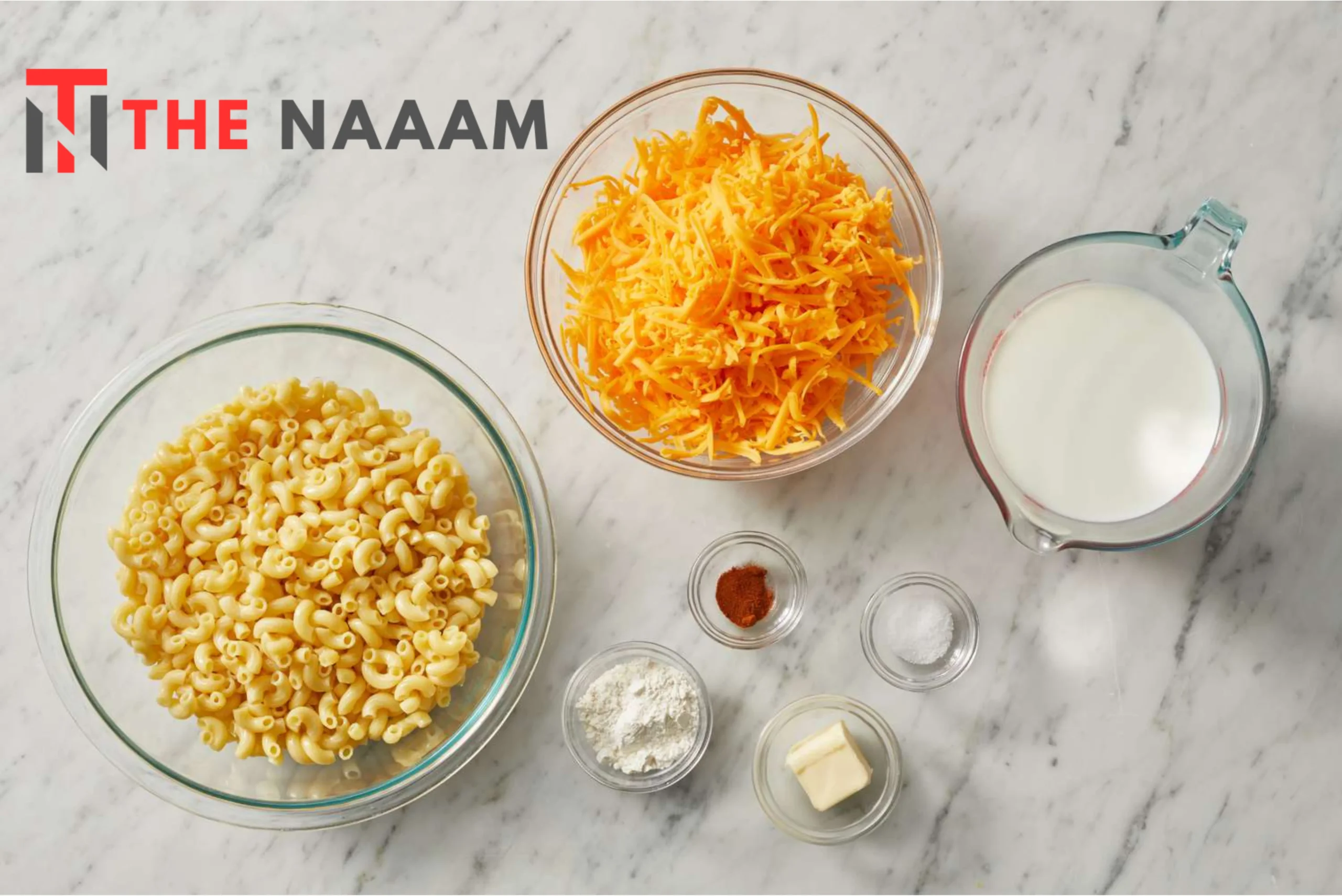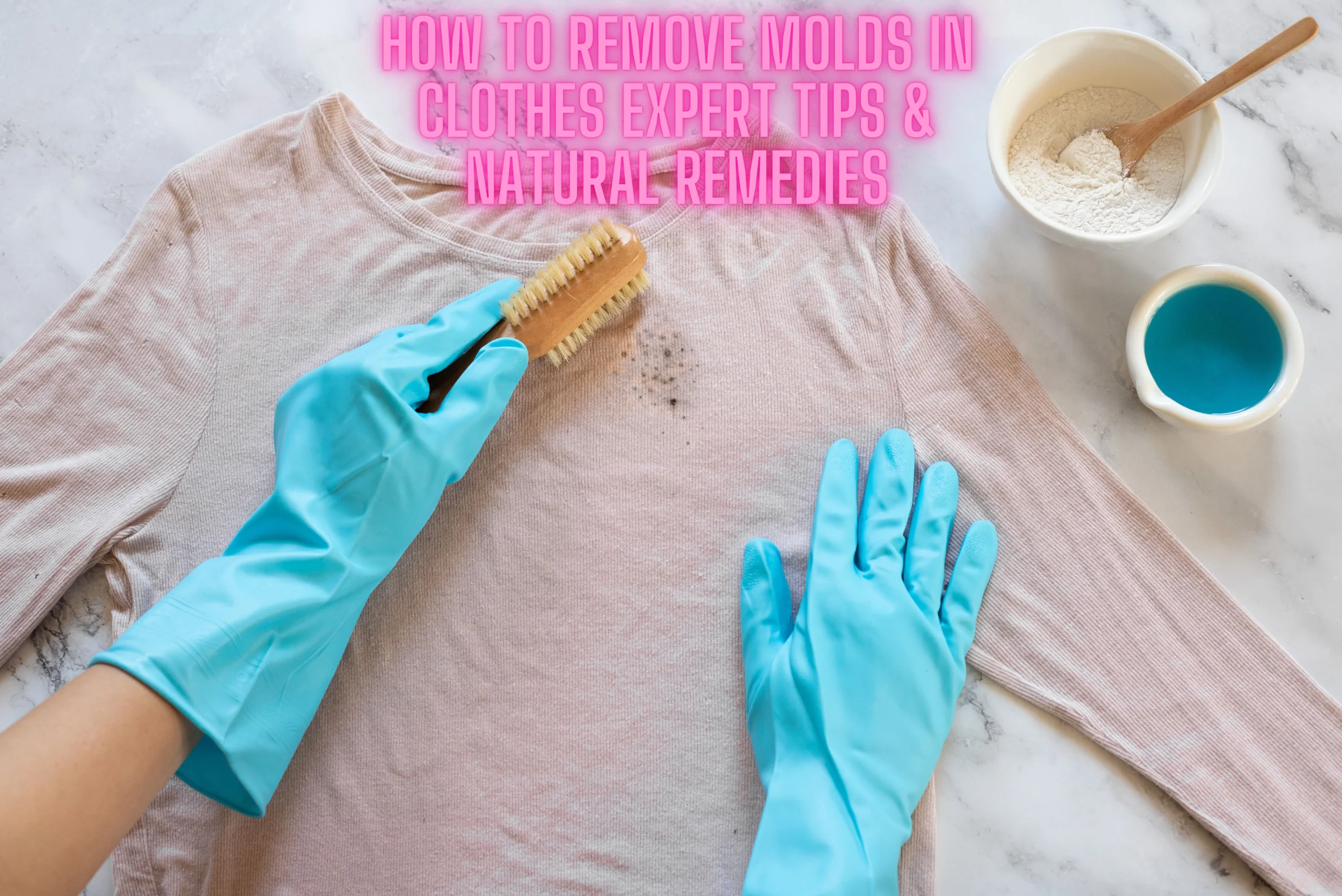Table of Contents
ToggleLearn How To Effectively Remove Mold From Clothes With Our Comprehensive Guide
Learn the best practices and all-natural solutions for safely and successfully removing mold from clothing. One kind of fungus that grows well in moist, humid conditions is mold. Spores of mold may settle and develop on fabric surfaces when clothing is left in a wet basement or other place with inadequate ventilation, exposing the clothing to moisture and heat.
It’s critical to keep clothing storage areas dry and clean in order to prevent mold growth. Before storing clothing, make sure it is completely dry since moisture might promote the formation of mold. Sufficient airflow in closets and storage spaces is essential to avoid moisture accumulation.
Frequent cleaning of storage areas aids in the removal of mold spores and dust that might taint clothing. Furthermore, allowing clothing to sometimes air out in the sun helps keep it fresh and eliminate mold spores. For insect and mold development prevention, try utilizing natural repellents like lavender sachets or cedar blocks.
Keep your clothing out of wet, humid spaces like bathrooms or basements, and use dehumidifiers to lower moisture content if needed. Using hot water and detergent to wash clothes properly also aids in the removal of mold spores and stains. You can successfully prevent mold growth in your clothing and make sure it remains clean and usable by adhering to these precautions.
Identifying Mold on Clothes
It’s important to identify the telltale symptoms of mold development on clothing before delving into cleanup techniques. Fuzzy patches that are usually colored green, black, or white are the characteristic appearance of mold. Remove Mould Stains From Colored Fabric may stain or discolor materials and has a musty smell. Effective remediation of the issue depends on being able to distinguish mold from other stains such as dirt or food residue.
Setting Up Before Removal
Prepare the tools you’ll need, including a brush, hot water, detergent, vinegar, and baking soda, before trying to remove mold from clothing. To avoid breathing in mold spores, make sure the cleaning area has enough ventilation and put on safety goggles and a mask.
Ways to Get Rid of Mold on Clothes: Use Hot Water and Detergent
Laundering garments in hot water with detergent is one of the best methods to get rid of mold from them. Make use of the highest water temperature advised for the material and ladle in a good helping of detergent. As usual, wash the garments, and if needed, repeat.
Using Baking Soda or Vinegar
Natural cleaners like baking soda and vinegar may be used to get rid of mold from clothing. Mold in Clothing Can Be Removed With Baking Soda Mix equal amounts vinegar and water to create a solution, or use baking soda and water to produce a paste. After immediately applying the paste or solution to the problematic areas and letting it rest for a while, wash the clothing normally.
Using Industrial Mold Remover
Several commercial products are on the market that are made especially to remove mold off clothing, such as Black Mold Out Of Clothes. When using these products, strictly adhere to the manufacturer’s directions and make sure the cleaning area has enough airflow.
Natural Remedies for Mold Removal
There are a number of home solutions available in addition to store-bought mold removal products for clothing.
Salt Solution with Lemon Juice
Apply a paste made from lemon juice and salt to the regions that are moldy. After a few hours, let it rest before doing your regular laundry.
Tea Tree Oil Blend
Tea tree oil’s antifungal qualities are well-known. Spray the moldy spots with a solution made from a few drops of tea tree oil and water. Allow it to settle for a while before cleaning the clothing.
Exposure to Sunlight
Natural light destroys mold. To destroy the mold spores, hang the moldy garments outside in the sun for a few hours.
Stopping Future Mold Development
After you’ve eradicated mold from clothing quickly, take action to stop it from happening again.
How to Store Clothes Properly
To avoid moisture accumulation, store clothing in places that are dry and well-ventilated.
Continual Cleaning Practices
Wash your clothing often, particularly if you’ve been sweating or exposed to moisture.
Taking Care of the Ventilation
To stop mold from growing, make sure closets and storage areas have enough air.
How Does Vinegar Remove Mould From Fabric?
- Acidic Properties:
White vinegar in particular has an acidic content that usually includes acetic acid. This acidity aids in the disintegration and dissolution of stains and mold spores on fabric surfaces.
Antimicrobial Activity
Since vinegar is a natural antibacterial, it may both destroy and stop the formation of mold spores. Because of this characteristic, vinegar works well to eradicate mold from cloth.
Infiltration:
When vinegar is sprayed to fabric, it may get to the spores of mold that are entrenched in the fibers. Because of this penetration, vinegar may efficiently neutralize and get rid of mold from the surface of the cloth.
Cleaning Procedure:
Moreover, vinegar is a cleaning agent that may be used to lift and get rid of mold stains, filth, and grime from fabrics. It has the ability to decompose organic materials, making them simpler to wash away during laundry.
Secure and Eco-Friendly:
Since vinegar is a natural and non-toxic cleaning agent, it may be used on cloth without causing any negative side effects. In contrast to strong chemical cleansers, it is also ecologically friendly.
A natural and adaptable way to get rid of mold from clothing is to use baking soda to remove it off clothing. In order to apply it efficiently, begin by sweeping any stray mold spores outside to stop them from spreading. Next, combine baking soda and water to make a thick paste. For added mold-fighting power, you may also add vinegar or lemon juice.
Does Soap Kill Mold On Clothes?
While soap by itself may not completely eradicate mold from clothing, it can aid in the eradication process.
Cleaning Action: Soap aids in the removal of mold stains, filth, and grime from fabric surfaces. It facilitates the removal of mold from fabric fibers during washing by loosening its bonds.
Reduction of Surface Tension: Soap makes water more permeable to fabric by lowering its surface tension. This makes it possible for any mold spores that could be ingrained in the fabric to be reached by the water and removed.
Mild Antimicrobial Properties: Certain soaps may have antimicrobial ingredients that, in certain cases, may prevent the formation of mold. Although soap by itself may not completely eradicate mold spores, it can aid in lessening their existence on the material.
When used with Hot Water: Soap works better to get rid of mold from clothing when it is mixed with hot water. While soap helps to break down and extract the mold from the cloth, hot water helps to destroy mold spores and eliminate stains.
Remove Mold From Clothes With Bleach It’s crucial to tackle the issue similarly to how mold stains are removed. Similar to mold, quick action is essential to stop more fabric deterioration. It’s similar to stopping the spread of mold by quickly cleaning moldy clothes—rinse the afflicted area right away with cold water to dilute the bleach.
Just as with vinegar or other natural cures for mold stains, after rinsing, add a neutralizing agent like hydrogen peroxide or lemon juice to neutralize the bleach’s effects. Similar to soaking moldy clothing to get rid of mold spores, soaking the discolored area in a vinegar solution will help neutralize the bleach and remove residue.
Lastly, the same procedures that are used to remove mold stains are also used to wash the garments as normal and let them air dry to avoid establishing any leftover bleach stains. Using these techniques, you may successfully remove mold and bleach stains from clothing while keeping it clean and usable.
Remove Fungus From Clothes Without Washing
Removing fungus from clothes without washing can be challenging but possible with alternative methods.
Exposure to Sunlight:
The impacted clothing should be hung outside in the sun. Natural disinfecting qualities of sunlight may aid in the removal of smells and the death of fungus. To guarantee complete exposure, leave the clothing in the sun for a few hours, turning them every so often.
Freezing:
The clothing that have been infected by fungus should be sealed firmly in a plastic bag. After that, freeze the bag for a minimum of 24 to 48 hours. Fungus spores may be killed by the intense cold and prevented from growing further. After that, take the clothing out of the freezer and give it time to fully defrost before putting it outside to dry.
Steam Cleaning:
To steam the sections of the clothing that are fungus-infested, use a portable garment steamer. Spores of fungus may be killed and mildew stains can be removed by the heat from the steam. After making sure that every impacted area is thoroughly steamed, let the clothing air dry.
Spray of vinegar:
In a spray bottle, combine equal parts white vinegar and water. Apply a thin layer of the vinegar solution to the soiled sections of the clothing, then let it air dry. Because of its inherent antifungal qualities, vinegar may help destroy fungi and get rid of smells.
Soda Absorption in Baking:
Directly sprinkle baking soda over the clothing’s fungus-infested places. In addition to being a natural deodorizer, baking soda may aid in absorbing moisture—a condition that fungus loves. After leaving the baking soda on the clothing for the whole night, shake or brush it off the following day.
Charcoal that has been activated:
Put some briquettes or sachets of activated charcoal next to the clothing that has fungus on it. By absorbing moisture and smells, activated charcoal may help provide an atmosphere that is unfavorable to the development of fungi.
Tips for Specific Types of Fabrics
Different cleaning techniques could be needed for certain textiles. Constantly examine the clothing’s care label and adhere to the manufacturer’s recommendations.
Safety Issues
Take appropriate disposal of infected things to stop mold spores from spreading. Additionally, take the required measures and be aware of the health concerns related to mold exposure.
Typical Errors to Steer Clear of
Steer clear of bleach when dealing with mold; it will make the mold more robust, which will make the situation worse. Furthermore, minor mold patches should not be ignored since, if left addressed, they may spread swiftly.
In order to maintain clothing’s integrity and the health and safety of individuals who use it, mold removal is a must. You can easily remove mold from clothing and stop it from coming back by using the suggested techniques and preventive measures.
Can Mold Be Removed From Clothing?
Absolutely, mold may be removed from garments using the appropriate methods and supplies. It is imperative to take swift action to stop the spread and harm. This is how you do it:
To stop spores from spreading indoors, start the preparation process by moving the moldy clothing outside. Remove any stray fragments of mold.
Pre-Treatment: Apply a solution of equal parts white vinegar and water to the problematic areas in order to pretreat mild mold stains. To release the mold, let it rest for fifteen to thirty minutes.
Cleaning: Use a strong detergent and hot water to wash the clothing. When using the wash cycle, add a cup of white vinegar to help destroy mold spores and erase stains.
Sunlight Exposure: To dry, hang the cleaned clothing outside in the bright sun. Sunlight aids in the natural removal of any leftover stains and helps to further destroy mold spores.
If necessary, repeat: You may need to use a professional mold remover or repeat the washing procedure to get rid of very tough mold stains. Pay close attention to the product’s instructions.
Dry Fully: Prior to restowing the clothing, make sure it has dried entirely. A thorough drying process prevents mold from growing again.












